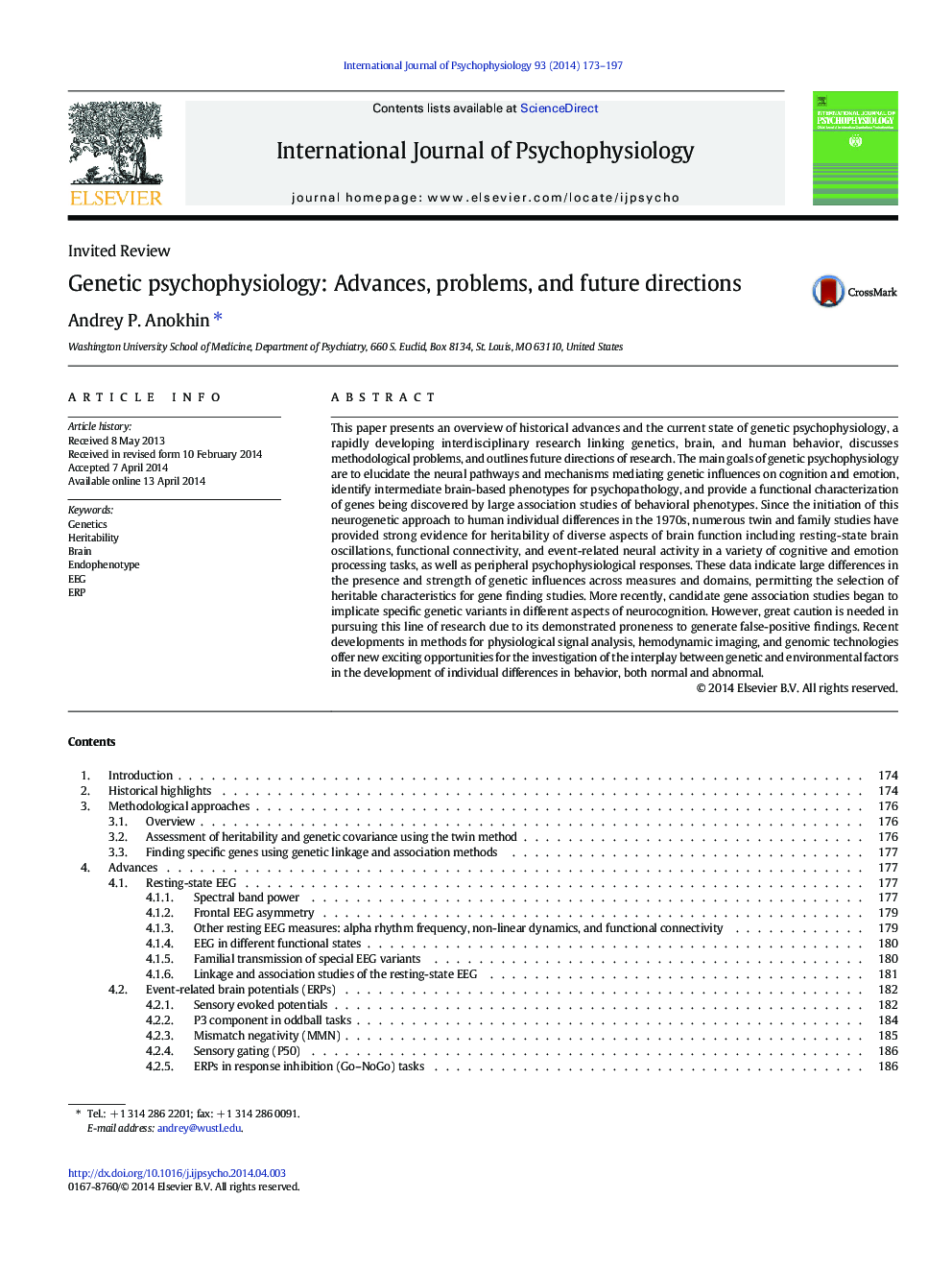| کد مقاله | کد نشریه | سال انتشار | مقاله انگلیسی | نسخه تمام متن |
|---|---|---|---|---|
| 929607 | 1474416 | 2014 | 25 صفحه PDF | دانلود رایگان |
• Twin and family studies indicate strong heritability of brain function.
• Association studies point to specific genes affecting brain physiology.
• Genetic psychophysiology can provide intermediate phenotypes for psychopathology.
This paper presents an overview of historical advances and the current state of genetic psychophysiology, a rapidly developing interdisciplinary research linking genetics, brain, and human behavior, discusses methodological problems, and outlines future directions of research. The main goals of genetic psychophysiology are to elucidate the neural pathways and mechanisms mediating genetic influences on cognition and emotion, identify intermediate brain-based phenotypes for psychopathology, and provide a functional characterization of genes being discovered by large association studies of behavioral phenotypes. Since the initiation of this neurogenetic approach to human individual differences in the 1970s, numerous twin and family studies have provided strong evidence for heritability of diverse aspects of brain function including resting-state brain oscillations, functional connectivity, and event-related neural activity in a variety of cognitive and emotion processing tasks, as well as peripheral psychophysiological responses. These data indicate large differences in the presence and strength of genetic influences across measures and domains, permitting the selection of heritable characteristics for gene finding studies. More recently, candidate gene association studies began to implicate specific genetic variants in different aspects of neurocognition. However, great caution is needed in pursuing this line of research due to its demonstrated proneness to generate false-positive findings. Recent developments in methods for physiological signal analysis, hemodynamic imaging, and genomic technologies offer new exciting opportunities for the investigation of the interplay between genetic and environmental factors in the development of individual differences in behavior, both normal and abnormal.
Journal: International Journal of Psychophysiology - Volume 93, Issue 2, August 2014, Pages 173–197
